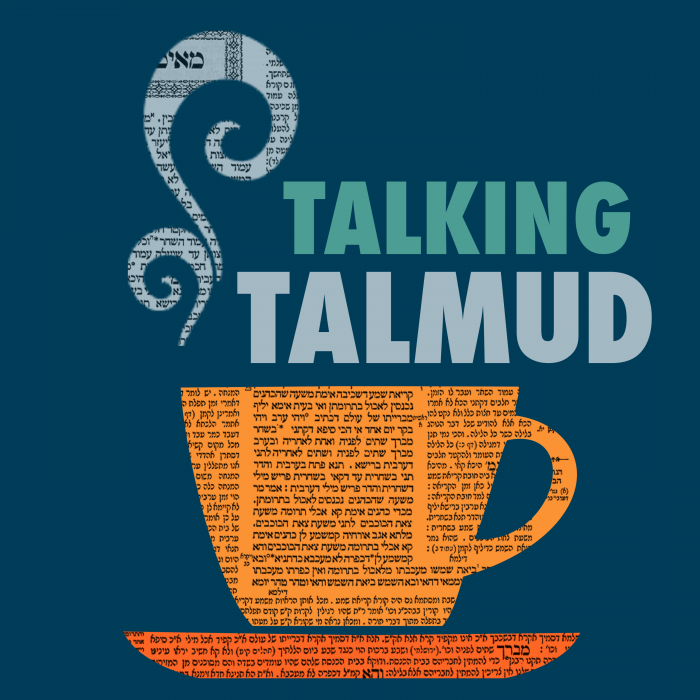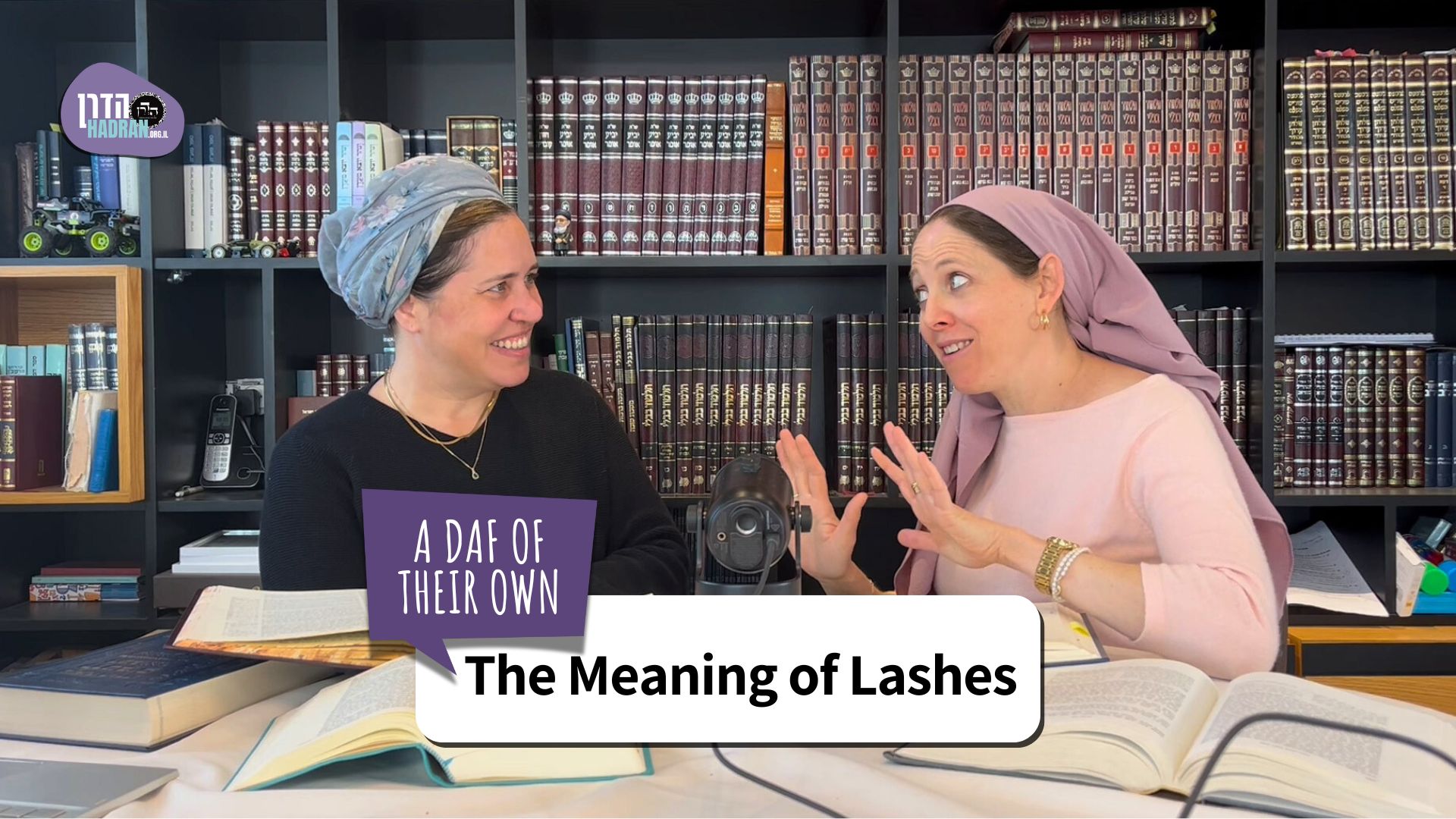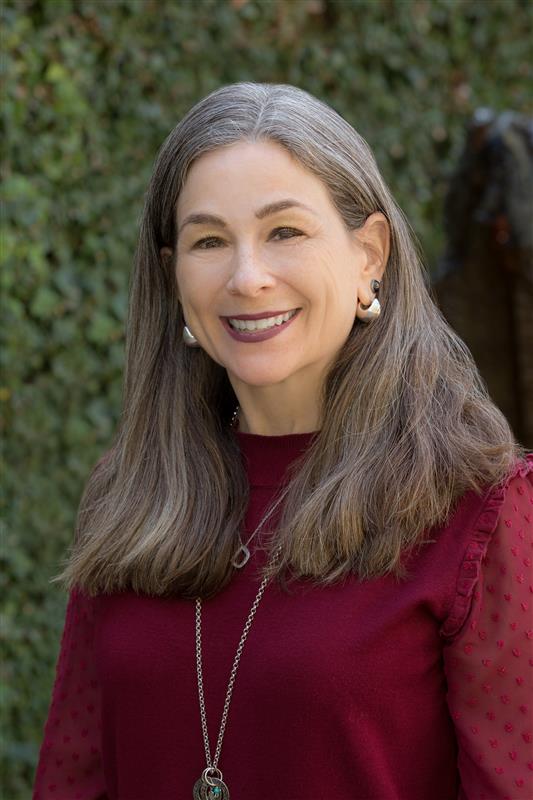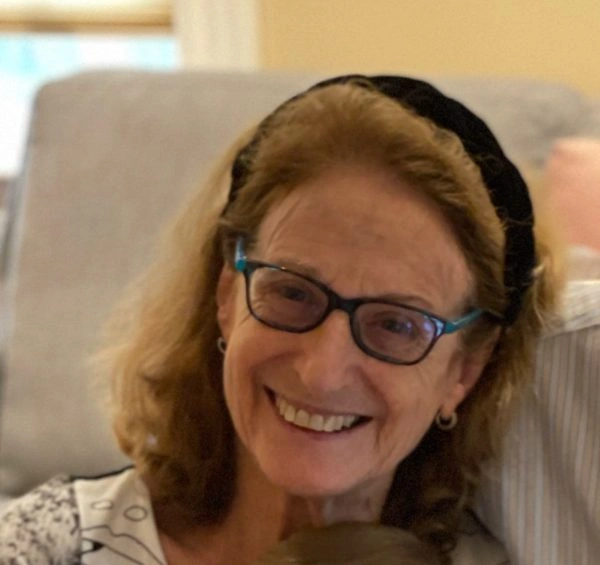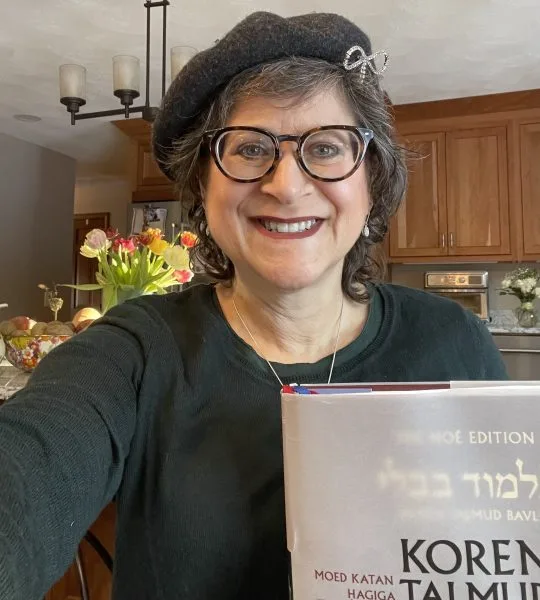Makkot 19
מֵאֵימָתַי (מ)חַיָּיבִין עֲלֵיהֶם – מִשֶּׁיִּרְאוּ פְּנֵי הַבַּיִת. כְּמַאן – כִּי הַאי תַּנָּא, דְּתַנְיָא, רַבִּי אֱלִיעֶזֶר אוֹמֵר: בִּכּוּרִים מִקְצָתָן בַּחוּץ וּמִקְצָתָן בִּפְנִים, שֶׁבַּחוּץ – הֲרֵי הֵן כְּחוּלִּין לְכׇל דִּבְרֵיהֶם, שֶׁבִּפְנִים – הֲרֵי הֵן כְּהֶקְדֵּשׁ לְכׇל דִּבְרֵיהֶם.
from when is a non-priest who eats first fruits liable to receive death at the hand of Heaven for their consumption? One is liable from when the fruits will enter inside the Temple. The Gemara notes: In accordance with whose opinion is this halakha stated? It is in accordance with the opinion of this tanna, as it is taught in a baraita that Rabbi Eliezer says: With regard to first fruits, some of which are outside and some of which are inside the Temple, the halakhic status of those that are outside the Temple is like that of non-sacred produce for all matters concerning them, and the halakhic status of those that are inside the Temple is like that of consecrated produce for all matters concerning them.
אָמַר רַב שֵׁשֶׁת: בִּכּוּרִים, הַנָּחָה – מְעַכֶּבֶת בָּהֶן, קְרִיָּיה – אֵין מְעַכֶּבֶת בָּהֶן.
§ Rav Sheshet says: With regard to first fruits, the lack of placement alongside the altar invalidates them; while the lack of recitation of the accompanying Torah verses does not invalidate them.
כְּמַאן – כִּי הַאי תַּנָּא, דְּתַנְיָא: רַבִּי יוֹסֵי אוֹמֵר שְׁלֹשָׁה דְּבָרִים מִשּׁוּם שְׁלֹשָׁה זְקֵנִים, רַבִּי יִשְׁמָעֵאל אוֹמֵר: יָכוֹל יַעֲלֶה אָדָם מַעֲשֵׂר שֵׁנִי בִּזְמַן הַזֶּה בִּירוּשָׁלַיִם, וְיֹאכְלֶנּוּ? וְדִין הוּא: בְּכוֹר טָעוּן הֲבָאַת מָקוֹם, וּמַעֲשֵׂר שֵׁנִי טָעוּן הֲבָאַת מָקוֹם, מָה בְּכוֹר אֵינוֹ אֶלָּא בִּפְנֵי הַבַּיִת – אַף מַעֲשֵׂר אֵינוֹ אֶלָּא בִּפְנֵי הַבַּיִת.
The Gemara notes: In accordance with whose opinion is this halakha stated? It is in accordance with the opinion of this tanna, Rabbi Yishmael, as it is taught in a baraita that Rabbi Yosei says three statements in the name of three elders, and one of those statements is that which Rabbi Yishmael says: One might have thought that a person would bring second-tithe produce up to Jerusalem in the present, after the destruction of the Temple, and eat it. And ostensibly, it could be derived by means of a logical inference that one may not do so: A firstborn offering requires bringing it to the place, to Jerusalem, and eating it there, and second-tithe produce requires bringing it to the place; just as the firstborn offering may be eaten there only in the presence of the Temple, so too, second-tithe produce may be eaten there only in the presence of the Temple.
מָה לִבְכוֹר שֶׁכֵּן טָעוּן מַתַּן דָּמִים וְאֵימוּרִין לְגַבֵּי מִזְבֵּחַ! בִּכּוּרִים יוֹכִיחוּ. מָה לְבִכּוּרִים, שֶׁכֵּן טְעוּנִים הַנָּחָה!
Rabbi Yishmael continues and counters: What is notable about a firstborn? Bringing the firstborn to Jerusalem is required only in the presence of the Temple, because it is notable in that it requires placement of its blood and its sacrificial portions upon the altar; will you say the same with regard to second-tithe produce, which requires only that it be consumed in Jerusalem? He then suggests: First fruits will prove that placement of blood upon the altar is not a factor, as they do not require placement of blood upon the altar, and yet they are brought to Jerusalem only in the presence of the Temple. Rabbi Yishmael counters: What is notable about first fruits? They are notable in that they require placement alongside the altar. Perhaps, since second-tithe produce does not require placement at all, even in the present one must bring it to Jerusalem and eat it there.
תַּלְמוּד לוֹמַר: ״וְאָכַלְתָּ [שָּׁם] לִפְנֵי ה׳ אֱלֹהֶיךָ וְגוֹ׳״ – מַקִּישׁ מַעֲשֵׂר לִבְכוֹר, מָה בְּכוֹר אֵינוֹ אֶלָּא לִפְנֵי הַבַּיִת – אַף מַעֲשֵׂר אֵינוֹ אֶלָּא לִפְנֵי הַבַּיִת. וְאִם אִיתָא, לִיפְרוֹךְ: מָה לְבִכּוּרִים – שֶׁכֵּן טְעוּנִין קְרִיָּיה וְהַנָּחָה!
Rabbi Yishmael concludes: Therefore, the verse states: “And you shall eat before the Lord your God…the tithe of your grain…and the firstborn of your herd and your flock” (Deuteronomy 14:23); the Torah juxtaposes second-tithe produce to the firstborn. Just as the firstborn may be eaten there only in the presence of the Temple, so too, second-tithe produce may be eaten there only in the presence of the Temple. The Gemara explains: the proof of Rav Sheshet’s opinion from the baraita is: And if it is so that the lack of recitation of the Torah verses invalidates the ritual of first fruits, let the baraita refute the derivation by saying: What is notable about first fruits? They are notable in that they require recitation of the Torah verses and placement alongside the altar.
אָמַר רַב אָשֵׁי: נְהִי דְּעִיכּוּבָא לֵיכָּא, מִצְוָה מִי לֵיכָּא? וְלֵימָא מִצְוָה וְלִיפְרוֹךְ! אֶלָּא אָמַר רַב אָשֵׁי: כֵּיוָן דְּאִיכָּא בִּכּוּרֵי הַגֵּר, דְּבָעֵי לְמֵימַר אֲשֶׁר נִשְׁבַּע [ה׳] לַאֲבֹתֵינוּ״, וְלָא מָצֵי אָמַר – לָא פְּסִיקָא לֵיהּ.
Rav Ashi said: There is no proof from the fact that recitation is not mentioned. Although the lack of recitation does not invalidate the first fruits, is there no mitzva? Everyone agrees that there is a mitzva to recite the Torah verses. And therefore let the tanna say that there is a mitzva to recite the portion; and refute the proof from first fruits in that manner, as in the case of second tithe there is no mitzva to recite Torah verses. Rather, Rav Ashi said that there is a different reason that recitation was omitted from the refutation: It is that there is the case of the first fruits of a convert, who needs to recite: “I have come to the land that the Lord swore unto our fathers” (Deuteronomy 26:3), and since he cannot say it, as the Lord did not swear to give the land to the ancestors of the convert, he brings the first fruits but does not read the portion. Therefore, the obligation to recite the Torah verses is not clear-cut for the tanna and he did not mention it.
וְלִיהְדַּר דִּינָא וְתֵיתֵי בַּ״מָּה הַצַּד״! מִשּׁוּם דְּאִיכָּא לְמִיפְרַךְ: מָה לְהַצַּד הַשָּׁוֶה שֶׁבָּהֶן, שֶׁכֵּן יֵשׁ בָּהֶן צַד מִזְבֵּחַ.
The Gemara asks: Why was it necessary for the tanna to derive that second-tithe produce is not brought to Jerusalem at present from the juxtaposition in the verse? And let the derivation revert to its starting point, and derive the halakha through an analogy derived from the common factor of first fruits and the firstborn. Each of the sources neutralizes the significance of the notable factor in the other, leaving the common factor: One must bring them to Jerusalem. From there it may be derived that second-tithe produce, which one must also bring to Jerusalem, need not be brought there when the Temple is not standing. The Gemara answers: The juxtaposition is necessary due to the fact that this analogy can be refuted: What is notable about the common factor that is true of both first fruits and the firstborn? It is notable in that they have an aspect involving the altar, which is not so in the case of second tithe.
וּמַאי קָסָבַר? אִי קָסָבַר קְדוּשָּׁה רִאשׁוֹנָה קִדְּשָׁה לִשְׁעָתָהּ וְקִדְּשָׁה לֶעָתִיד לָבֹא – בְּכוֹר נָמֵי, אִי קָסָבַר קְדוּשָּׁה רִאשׁוֹנָה קִדְּשָׁה לִשְׁעָתָהּ וְלֹא קִדְּשָׁה לֶעָתִיד לָבֹא – אֲפִילּוּ בְּכוֹר נָמֵי תִּבְּעֵי!
The Gemara asks: And what opinion does Rabbi Yishmael hold that led to his initial assumption that one is obligated to bring a firstborn animal to Jerusalem only when the Temple is standing? If he maintains in general that the initial consecration of the Temple sanctified Jerusalem for its time and sanctified Jerusalem forever, and the location of the Temple remains sacred even after the Temple was destroyed, then one should also be obligated to bring a firstborn animal to the place of the Temple and sacrifice it on an altar and eat it. If he maintains that the initial consecration of the Temple sanctified Jerusalem for its time but did not sanctify Jerusalem forever, then he should raise a dilemma even with regard to a firstborn, whether it may be eaten in Jerusalem.
אָמַר רָבִינָא: לְעוֹלָם קָסָבַר קִדְּשָׁה לִשְׁעָתָהּ וְלֹא קִדְּשָׁה לֶעָתִיד לָבֹא, וְהָכָא בִּבְכוֹר שֶׁנִּזְרַק דָּמוֹ קוֹדֶם חוּרְבַּן הַבַּיִת, וְחָרַב הַבַּיִת וַעֲדַיִין בְּשָׂרוֹ קַיָּים. וּמַקְּשִׁינַן בְּשָׂרוֹ לְדָמוֹ, מָה דָּמוֹ בַּמִּזְבֵּחַ – אַף בְּשָׂרוֹ בַּמִּזְבֵּחַ. וּמַקִּישׁ מַעֲשֵׂר לִבְכוֹר.
Ravina said: Actually, Rabbi Yishmael maintains that the initial consecration of the Temple sanctified Jerusalem for its time but did not sanctify Jerusalem forever; and why is it obvious to him that the firstborn is not eaten? It is because here, he is stating the halakha with regard to the case of a firstborn whose blood was sprinkled before the destruction of the Temple, and the Temple was then destroyed, and its flesh is still intact. And based on a juxtaposition: “You shall sprinkle their blood upon the altar…and their flesh shall be for you” (Numbers 18:17–18), we compare the status of its flesh to the status of its blood; just as its blood must be sprinkled at a time when the altar is standing, so too its flesh may be eaten only at a time when the altar is standing. And he compares the status of second-tithe produce to the status of a firstborn offering, and derives that one may partake of second-tithe produce in Jerusalem only when the Temple is standing.
וְכִי דָּבָר הַלָּמֵד בְּהֶקֵּשׁ חוֹזֵר וּמְלַמֵּד בְּהֶקֵּשׁ? מַעְשַׂר דָּגָן חוּלִּין הוּא.
The Gemara asks: And does a matter derived via juxtaposition then teach another matter via juxtaposition? The principle with regard to the halakhot of consecrated matters is that a halakha derived via one of the hermeneutical principles cannot serve as the basis for derivation of another halakha; each halakha requires its own source. The Gemara answers: Second tithe of grain is non-sacred produce, and halakhot of non-sacred matters derived via hermeneutical principles may serve as the basis for deriving other halakhot using hermeneutical principles.
הָנִיחָא לְמַאן דְּאָמַר בָּתַר לָמֵד אָזְלִינַן, אֶלָּא לְמַאן דְּאָמַר בָּתַר מְלַמֵּד אָזְלִינַן, מַאי אִיכָּא לְמֵימַר?
The Gemara asks: This works out well according to the one who says: In determining whether a derivation involves consecrated matters or whether it involves non-sacred matters, we follow the matter that is derived from a matter derived from juxtaposition. Since in this case the matter derived is second-tithe produce, which for these purposes is non-sacred, its halakhic status may be derived from juxtaposition with the halakhot of sacrificial matters. But according to the one who says: We follow the matter that teaches, i.e., from which the halakha is derived, what is there to say? The status of second-tithe produce may not be derived by means of juxtaposition from the status of the firstborn offering, which itself was derived from the blood of the offering, because the firstborn offering is a sacrificial matter.
דָּם וּבָשָׂר חֲדָא מִילְּתָא הִיא.
The Gemara answers: This is not a matter derived from a matter derived from a juxtaposition, as the status of the firstborn offering is not derived from the status of blood; blood and flesh are one matter. There is only one derivation in this case, which is that the status of second-tithe produce is derived from the status of the blood and the flesh of the firstborn.
קׇדְשֵׁי קֳדָשִׁים וְכוּ׳. תְּנֵינָא חֲדָא זִימְנָא: מַעֲשֵׂר שֵׁנִי וְהֶקְדֵּשׁ שֶׁלֹּא נִפְדּוּ! אָמַר רַבִּי יוֹסֵי בַּר חֲנִינָא: סֵיפָא בְּמַעֲשֵׂר שֵׁנִי טָהוֹר וְגַבְרָא טָהוֹר, דְּקָא אָכֵיל חוּץ לַחוֹמָה. רֵישָׁא בְּמַעֲשֵׂר שֵׁנִי טָמֵא וְגַבְרָא טָמֵא, וְקָא אָכֵיל לֵיהּ בִּירוּשָׁלַיִם.
§ The mishna teaches that one who ate offerings of the most sacred order outside the Temple courtyard and one who ate second-tithe produce outside the wall of Jerusalem is flogged with forty lashes. The Gemara asks: Didn’t we already learn this one time in the previous mishna (13a), that one who ate second-tithe produce or sacrificial food that was not redeemed is flogged? Why does the tanna repeat the halakha of second-tithe produce in this mishna? Rabbi Yosei bar Ḥanina said: These are different cases; the latter clause, this mishna, is in the case of ritually pure second-tithe produce and a ritually pure person who eats it outside the wall of Jerusalem. The first clause, the previous mishna, is in the case of ritually impure second-tithe produce and a ritually impure person who eats it within Jerusalem.
וּמְנָלַן דְּמִחַיַּיב עֲלֵיהּ מִשּׁוּם טוּמְאָה? דְּתַנְיָא, רַבִּי שִׁמְעוֹן אוֹמֵר: ״לֹא בִּעַרְתִּי מִמֶּנּוּ בְּטָמֵא״ – בֵּין שֶׁאֲנִי טָמֵא וְהוּא טָהוֹר, בֵּין שֶׁאֲנִי טָהוֹר וְהוּא טָמֵא. וְהֵיכָן מוּזְהָר עַל אֲכִילָה אֵינִי יוֹדֵעַ.
The Gemara asks: And from where do we derive that one is liable to receive lashes due to impurity? It is derived as it is taught in a baraita that Rabbi Shimon says that the verse in the portion of the declaration of tithes: “I have not put any of it away when impure” (Deuteronomy 26:14), is a general formulation that is interpreted to mean: Whether I am impure and the second-tithe produce is ritually pure, or whether I am ritually pure and the second-tithe produce is impure. Rabbi Shimon adds: And I do not know where it is that one is warned, i.e., where is there a prohibition, with regard to eating. Although it is clear from the verse cited that it is prohibited for one to partake of second-tithe produce while impure, the source for this prohibition is unclear.
טוּמְאַת הַגּוּף – בְּהֶדְיָא כְּתִיב: ״נֶפֶשׁ אֲשֶׁר תִּגַּע בּוֹ וְטָמְאָה עַד הָעָרֶב וְלֹא יֹאכַל מִן הַקֳּדָשִׁים וְגוֹ׳״ אֶלָּא: טוּמְאַת עַצְמוֹ מִנַּיִן?
Before citing the source of the prohibition, the Gemara asks: With regard to one with impurity of the body who partakes of second-tithe produce, it is explicitly written: “A soul that touches it shall be impure until the evening and shall not eat of the consecrated food” (Leviticus 22:6), which the Sages interpret to include second-tithe produce. This is a prohibition with regard to a ritually impure person partaking of second-tithe produce. But when Rabbi Shimon says: I do not know where it is that one is warned with regard to eating, he is stating: With regard to the impurity of the second-tithe produce itself, from where is the warning derived?
דִּכְתִיב: ״לֹא תוּכַל לֶאֱכֹל בִּשְׁעָרֶיךָ״. וּלְהַלָּן הוּא אוֹמֵר: ״בִּשְׁעָרֶיךָ תֹּאכְלֶנּוּ הַטָּמֵא וְהַטָּהוֹר״,
The Gemara answers: It is derived as it is written with regard to second-tithe produce: “You may not eat within your gates the tithe of your grain or of your wine or of your oil” (Deuteronomy 12:17), and later, with regard to a blemished firstborn animal, the verse states: “Within your gates you may eat it, the impure and the pure may eat it alike” (Deuteronomy 15:22).
וְתַנְיָא דְּבֵי רַבִּי יִשְׁמָעֵאל: אֲפִילּוּ טָמֵא וְטָהוֹר אוֹכְלִין בִּקְעָרָה אַחַת וְאֵין חוֹשְׁשִׁין, וְקָאָמַר רַחֲמָנָא: הַאיְךְ טָמֵא דִּשְׁרַי לָךְ גַּבֵּי טָהוֹר הָתָם – הָכָא לָא תֵּיכוֹל.
And it is taught in a baraita of the school of Rabbi Yishmael: Even a ritually pure person and a ritually impure person may eat the flesh of a blemished firstborn animal in one dish and need not be concerned, as there is no prohibition for one to eat it while he is impure or while it is impure. And the Merciful One says: It is that impure flesh of the blemished firstborn that is permitted for you to eat with a ritually pure person within your gates there, whereas here, in the case of second-tithe produce in Jerusalem, you may not eat it within your gates in the manner that one eats the flesh of the firstborn.
וּמְנָא לַן דְּבַר פְּדִיָּיה הוּא?
The Gemara stated that the case of second-tithe produce that was not redeemed, cited in the previous mishna, is referring to second-tithe produce that is impure. This indicates that impure second-tithe produce can be redeemed. The Gemara asks: And from where do we derive that impure second-tithe produce is subject to redemption?
דְּאָמַר רַבִּי אֶלְעָזָר: מִנַּיִן לְמַעֲשֵׂר שֵׁנִי שֶׁנִּטְמָא שֶׁפּוֹדִין אוֹתוֹ אֲפִילּוּ בִּירוּשָׁלַיִם? תַּלְמוּד לוֹמַר: ״כִּי לֹא תוּכַל שְׂאֵתוֹ.״ – וְאֵין ״שְׂאֵת״ אֶלָּא אֲכִילָה, שֶׁנֶּאֱמַר ״וַיִּשָּׂא מַשְׂאֹת מֵאֵת פָּנָיו״.
It is as Rabbi Elazar says: From where is it derived with regard to second-tithe produce that became impure that one may redeem it even in Jerusalem? It is derived as the verse states: “Because you are unable to carry it [se’eto], as the place is too far from you…and you shall turn it into money” (Deuteronomy 14:24–25). And se’et means nothing other than eating, as it is stated: “And portions [masot] were taken to them from before him” (Genesis 43:34), referring to gifts of food. Therefore, the phrase: You are unable se’eto, means: You cannot eat it, referring to a case where it is impure. The Torah states that in that case one may redeem the produce even if it is in Jerusalem, not at a distance.
אָמַר רַב בִּיבִי אָמַר רַב אַסִּי: מִנַּיִן לְמַעֲשֵׂר שֵׁנִי טָהוֹר שֶׁפּוֹדִין אוֹתוֹ אֲפִילּוּ בִּפְסִיעָה אַחַת חוּץ לַחוֹמָה? שֶׁנֶּאֱמַר: ״כִּי לֹא תוּכַל שְׂאֵתוֹ״. הַאי מִבְּעֵי לֵיהּ לְכִדְרַבִּי אֶלְעָזָר!
The Gemara cites another, related interpretation. Rav Beivai says that Rav Asi says: From where is it derived with regard to ritually pure second-tithe produce that one may redeem it even if it is one stride outside the wall of Jerusalem, contrary to the plain understanding of the verse: “As the place is too far from you”? It is derived as it is stated: “Because you are unable to carry it [se’eto],” indicating that if there is any reason that one is unable to carry the produce and bring it into Jerusalem, he may redeem it regardless of its distance from Jerusalem. The Gemara objects: That verse is necessary to derive the halakha of Rabbi Elazar that one may redeem impure second-tithe produce even in Jerusalem.
אִם כֵּן, לֵימָא קְרָא ״לֹא תוּכַל לְאוֹכְלוֹ״, מַאי ״שְׂאֵתוֹ״? וְאֵימָא כּוּלּוֹ לְהָכִי הוּא דַּאֲתָא! אִם כֵּן, לֵימָא קְרָא ״לֹא תוּכַל לִיטְּלוֹ״, מַאי ״שְׂאֵתוֹ״? שְׁמַע מִינַּהּ תַּרְתֵּי.
The Gemara answers: If so, that the verse is required to derive only the halakha of Rabbi Elazar, then let the verse state explicitly: You are unable to eat it. What is the reason that the verse employs the term “se’eto”? The Gemara objects: And say that the term comes entirely for this purpose, to teach that one may redeem the produce even if it is not far from the city, and nothing is derived with regard to impure produce. The Gemara answers: If so, let the verse state: You are unable to take it. Why does the verse employ the term “se’eto”? Conclude two conclusions from it: One may redeem ritually pure second-tithe produce even if it is just outside the walls of Jerusalem, and one may redeem ritually impure second-tithe produce even in Jerusalem.
יָתֵיב רַב חֲנִינָא וְרַב הוֹשַׁעְיָא, וְקָא מִבַּעְיָא לְהוּ: אַפִּיתְחָא דִּירוּשָׁלַיִם, מַהוּ? פְּשִׁיטָא, הוּא בַּחוּץ וּמַשָּׂאוֹ בִּפְנִים – קְלָטוּהוּ מְחִיצוֹת, הוּא בִּפְנִים וּמַשָּׂאוֹ בַּחוּץ, מַהוּ?
In connection to the discussion of where one may redeem second-tithe produce, the Gemara relates: Rav Ḥanina and Rav Hoshaya sat, and a dilemma was raised before them: If the second-tithe produce is at the entrance of Jerusalem, what is the halakha; can one redeem it there? The Gemara elaborates: It is obvious in a case where one is outside Jerusalem and his burden of second-tithe produce is inside Jerusalem; the tithe is admitted by the walls of Jerusalem and its status is that of produce that entered the city. But in a case where one is inside Jerusalem and his burden of second-tithe produce is outside Jerusalem, what is the halakha?
תְּנָא לְהוּ הָהוּא סָבָא בִּדְבֵי רַבִּי שִׁמְעוֹן בֶּן יוֹחַי: ״כִּי יִרְחַק מִמְּךָ הַמָּקוֹם״ – מִמִּילּוּאֲךָ.
A certain elder taught them a baraita of the school of Rabbi Shimon ben Yoḥai. It is written: “As the place is too far from you [mimmekha]” (Deuteronomy 14:24); and the term “mimmekha” is interpreted as: From your fullness [mimmilluakha], indicating the person and all his appurtenances, including the burden he bears. If any part of him or his appurtenances is inside the city, it is as though he is entirely inside the city, and therefore he may not redeem the second-tithe produce.
בָּעֵי רַב פָּפָּא: נָקֵיט לֵיהּ בְּקַנְיָא, מַאי? תֵּיקוּ.
Rav Pappa raises a related dilemma: If one is holding the second-tithe produce on a reed, and it is suspended behind him, what is the halakha? Since he is carrying the burden, does it fall into the category of his fullness, and it is no different from a burden that he bears on his person, or does its status differ because it is not actually resting on his body? The Gemara concludes: The dilemma shall stand unresolved.
אָמַר רַבִּי אַסִּי אָמַר רַבִּי יוֹחָנָן: מַעֲשֵׂר שֵׁנִי מֵאֵימָתַי חַיָּיבִין עָלָיו – מִשֶּׁרָאָה פְּנֵי הַחוֹמָה. מַאי טַעְמָא? דְּאָמַר קְרָא ״לִפְנֵי ה׳ אֱלֹהֶיךָ תֹאכְלֶנּוּ (שָׁנָה בְשָׁנָה)״, וּכְתִיב ״(כִּי) לֹא תוּכַל לֶאֱכֹל בִּשְׁעָרֶיךָ״, כֹּל הֵיכָא דְּקָרֵינַן בֵּיהּ ״לִפְנֵי ה׳ אֱלֹהֶיךָ תֹאכְלֶנּוּ״ – קָרֵינַן בֵּיהּ ״לֹא תוּכַל לֶאֱכוֹל בִּשְׁעָרֶיךָ״. וְכֹל הֵיכָא דְּלָא קָרֵינַן בֵּיהּ ״לִפְנֵי ה׳ אֱלֹהֶיךָ תֹאכְלֶנּוּ״ – לָא קָרֵינַן בֵּיהּ ״לֹא תוּכַל לֶאֱכוֹל בִּשְׁעָרֶיךָ״.
§ Rabbi Asi says that Rabbi Yoḥanan says: With regard to second-tithe produce, from when is one liable to receive lashes for eating it outside the walls of Jerusalem? It is from when the produce entered within the wall of Jerusalem. What is the reason for this? It is derived as the verse states with regard to second-tithe produce: “Before the Lord your God you shall eat it” (Deuteronomy 12:18), and it is written in the previous verse: “You may not eat within your gates” (Deuteronomy 12:17), from which it is derived: Anywhere that we read concerning it: “Before the Lord your God you shall eat it,” we read concerning it the prohibition: “You may not eat within your gates,” i.e., it may not be eaten outside the walls of Jerusalem; and anywhere that we do not read concerning it: “Before the Lord your God you shall eat it,” as the produce remained outside the walls, we do not read concerning it the prohibition: “You may not eat within your gates.”
מֵיתִיבִי, רַבִּי יוֹסֵי אוֹמֵר: כֹּהֵן שֶׁעָלְתָה בְּיָדוֹ תְּאֵנָה שֶׁל טֶבֶל, אָמַר: תְּאֵנָה זוֹ, תְּרוּמָתָהּ בְּעוּקְצָהּ, מַעֲשֵׂר רִאשׁוֹן בִּצְפוֹנָהּ, וּמַעֲשֵׂר שֵׁנִי לִדְרוֹמָהּ. וְהִיא שְׁנַת מַעֲשֵׂר שֵׁנִי וְהוּא בִּירוּשָׁלַיִם, אוֹ מַעְשַׂר עָנִי וְהוּא בִּגְבוּלִין, אֲכָלָהּ –
The Gemara raises an objection from that which Rabbi Yosei says: With regard to a priest that a fig of untithed produce came into his possession, and he seeks to separate terumot and tithes from it, he says: This fig, I designate its teruma at its stem, I designate its first tithe at its north side, and I designate its second tithe at its south side; and it is a year when second tithe is separated, i.e., the first, second, fourth, or fifth years of the Sabbatical Year cycle, and he is in Jerusalem, when he recites this formula. Or he says that poor man’s tithe shall be designated at its south side if it is a year of poor man’s tithe, i.e., the third or sixth years of the Sabbatical Year cycle, and he is located anywhere in the outlying areas, not in Jerusalem. In those cases, if he ate the fig,



